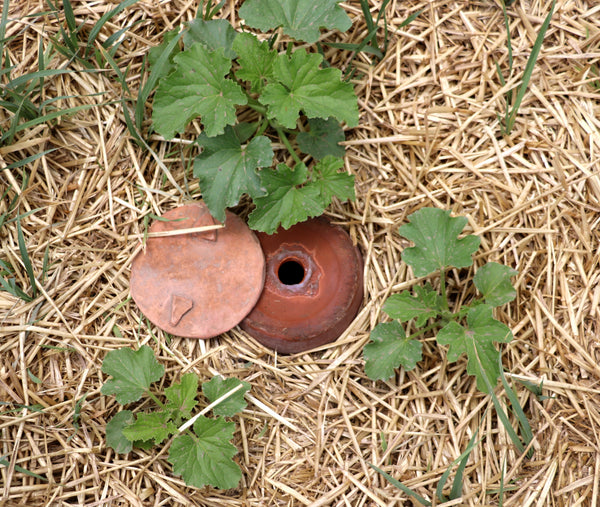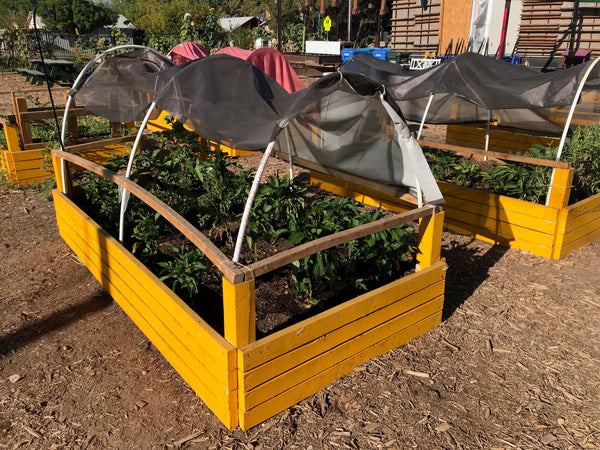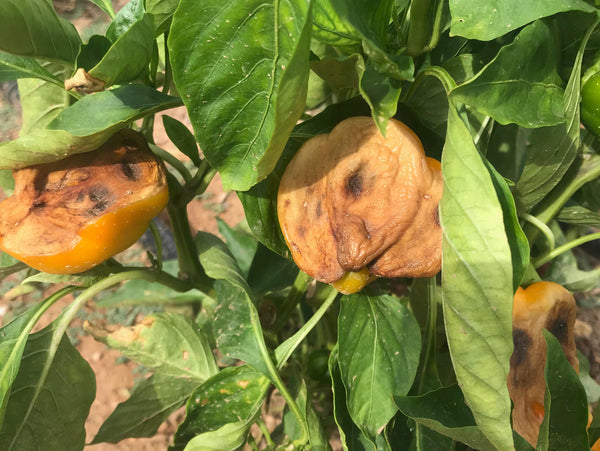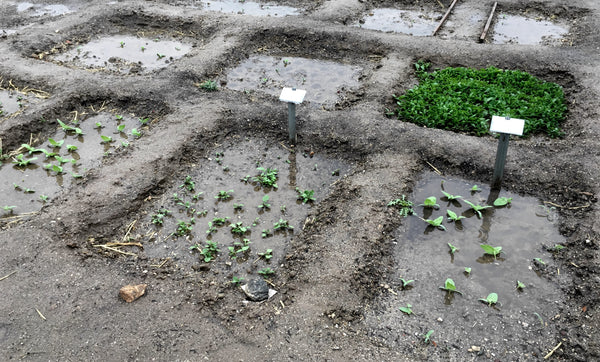By Melissa Kruse-Peeples, Educator.
In the desert Southwest, much of our attention is focused on water. When we tell people from outside the region that our annual rainfall ranges between 6-10 inches we are met with looks of disbelief. Annual rainfall in my hometown in Nebraska is three times that amount, not to mention the moisture from snow. As aridlands gardeners and farmers it is our responsibility to use our limited water wisely – both for the health and wellness of the crops but also for environmental conservation. Not to mention the benefits to your monthly water bill. Following a few simple tips will use water wisely in your garden.
Embrace our Climate
Gardening does not have one-size fits all solutions. We have very different seasons in the Southwest compared to other parts of the country, and across the Southwest region there are drastic differences in dates of first frost, timing of summer rains, and temperature ranges. Following a local gardening calendar is key. The local extension office is a good place to start, and NS/S has a planting calendar for low elevation areas of Arizona. In central and southern Arizona, we are blessed with 4 major planting seasons and coordinating appropriate timing of planting helps take advantage of our wetter seasons and avoids dry periods as well as avoiding crops that simply will not thrive if planted in the wrong season.
The Southwestern climate has some of the oldest farming traditions and these traditions have much to teach us about when, how, and what to plant. Some of these farming traditions are in irrigated contexts, but many are in dryland fields relying only on rainfall and rainwater flooding. While it is true that rainfall patterns and amounts have changed over the recent decades, the ingenious farming techniques and characteristics of the varieties grown in this arid land still hold true. Planting local varieties, like those conserved in the NS/S Seed Bank Collection, are tied to the rainfall that comes in early spring and the second spring of the monsoon season. Locked inside the genetic code of Southwestern varieties are the tools of how to adapt to limited water and high temperatures. Embracing the climate – and what is adapted to grow here – is one of the best ways to use water wisely. Look for local Southwestern varieties or varieties labeled drought tolerant, fast maturing, or arid-adapted. For non-local crop types, it is necessary to match similar weather to where these crops come from to give them conditions to which they are adapted and accept that some varieties simply just won’t grow here successfully, or perhaps shouldn’t be grown here because they will require massive amounts of water. Native varieties are adapted varieties.Water-Wise = Soil-Wise
One of the best things you can do for your garden to conserve water is to have healthy soil. Soil rich in organic matter allows for quick infiltration and water holding capacity. Essentially the organic matter acts like a sponge, absorbing and retaining water. If the soil texture has too much sand the water will drain away quickly. If there is too much clay the water will not soak in and much of it will run off. Adding organic matter via compost, worm castings, etc. will improve the soil texture, allowing water to soak in and be held longer. Adding a top layer of mulch is also important and discussed below.These additions to soil also provide nutrients to feed the plants. Healthy plants will be better able to withstand fluctuations in moisture and other stressors.
Water the roots. Not the leaves.
Watering our gardens is how plants feed themselves and stay hydrated. They do this by taking up nutrients that are dissolved in water and transported via roots. Therefore, it is important to get water to the roots – not the leaves. Water provided to the above-ground part of the plants may have some benefit by lowering temperature, but it can do more harm than good and is largely wasted. The water droplets act like magnifying glasses when hit by the sun and essentially burn or bake the cells. Water the soil to avoid this. Promoting deep watering also promotes deep root growth which allows plants to protect themselves from dry periods. It is important to know the approximate root depth of the crops you’re growing. Deeper-rooted plants obviously need deep watering whereas shallow-rooted plants benefit from more frequent, shallower watering. Lettuce, arugula, brassicas, garlic, onion and recently-planted seeds have short root zones and do not need excessive watering to penetrate deeply. They are benefited by low-dose, more frequent watering. Incidentally, these are cool-season crops in our region when water evaporation loss is less. Deeper-rooted plants like squash, melons, and tomatoes have root zones up to 3 feet deep. If these crops are only watered to short depths they do not develop deep root zones, which limits their growth potential and ability to take up nutrients. Additionally, they also are not able to buffer against drying surface soil. After watering, push a piece of rebar or a soil probe into the soil. The depth to which you can push is the depth the water has reached. If relatively shallow, you should be watering longer for deeper water penetration. Aerating your soil with a fork is also important to ensure water and roots are moving downward.
Minimize Evaporation
To be water-wise is to minimize the loss of water through evaporation. In the hot and dry desert environment, evaporation is intense. Adding a layer of organic mulch, around 4-6 inches, reduces loss of water via evaporation. Mulch also has the benefits of lowering the temperature of the root zone and blocks the growth of thirsty weeds. Mulches can include leaves, straw, compost, or newspaper. These materials will break down and eventually feed your soil and add organic matter to the root zone. I like to apply mulch after seedlings have emerged and grown several leaves or after transplants have been placed. Thick mulch can be difficult for seedlings to find their way to the sun. It is also important that your watering strategy gets water to the root zone below the mulch. Watering the mulch will not help your plant thrive. The type of garden bed can also help. Sunken in-ground beds are better than containers or raised garden beds where water is being sucked out to the atmosphere from all sides. Soil temperatures are also much higher in raised beds – beneficial to allow for earlier spring planting when it’s cooler, but another reason raised beds will require much more frequent watering than sunken beds. Ollas are a good strategy for raised beds to keep soil moist and cooler.
Evaporation loss can also be minimized through the use of shade. Many desert gardeners overuse shade and pull out the barricades as soon as we hear forecasts in the high 90’s. Embracing our climate and planting appropriate crops at appropriate times shouldn’t require shade. The key is getting plants in the ground early, allowing them to grow large and lush by the time the dry, hot conditions of early summer roll around. The plants create their own shade. Squash, beans, melons, watermelons and corn do not need shade. If they are suffering they likely need deep water and mulch.
Where artificial shade is beneficial is to prevent sunburn on fruits of tomatoes, peppers, and chiles as well as for containers or raised beds that can get extremely hot and have increased evaporation. Shade cloth should be around 30% or be placed in a way that still allows for several hours of direct sunlight. Good artificial shade is something that is designed to be taken up and down during the season. Strategic placement of garden beds to receive shade or filtered light in the later afternoon conserves soil moisture. Planting vining crops or perennial plants near block walls can also reduce the reflective heat.
Harvest the rain!
Even though it is limited, rainwater is the best choice for your garden. Rainwater is unchlorinated and free! The monsoon thunderstorms also have extra nitrogen due to the lightning’s effect on pulling nitrogen from the atmosphere. Plants will get an extra boost after thunderstorms. So, why not extend those benefits beyond the storm?
Every good desert gardener knows to set out every extra bucket when rain is in the forecast. But you can also be strategic in your garden bed placement to capture storm-water runoff or roof overflow. Plant downhill and in low-lying areas. That is why sunken basins are a better choice than raised beds. Zuni waffle garden style garden beds, like those at the NS/S conservation Center, are designed to capture and retain water within basins much like how the cells of a waffle capture and retain syrup.
Flexibility
A common question we receive from gardeners is: how much should I water? In truth, the answer really depends. Freshly-planted seeds need frequent, shallow watering to emerge. Flowering and fruiting plants need more water than initial growth requires. Tomatoes and peppers are thirstier crops than sorghum, beans, or okra. Overcast days will lead to less evaporation where dry, 100 degree days will induce more water loss. Monsoon storms can easily dump a half inch or more, allowing for a break in watering schedule.
To be water-wise is to be flexible and to respond to the needs of the plant. Deep watering, mulching, soil rich in organic matter, and the other tips discussed will provide the right context for healthy plants. Careful observation and flexibility in your watering practices will lead to even more water conservation!




